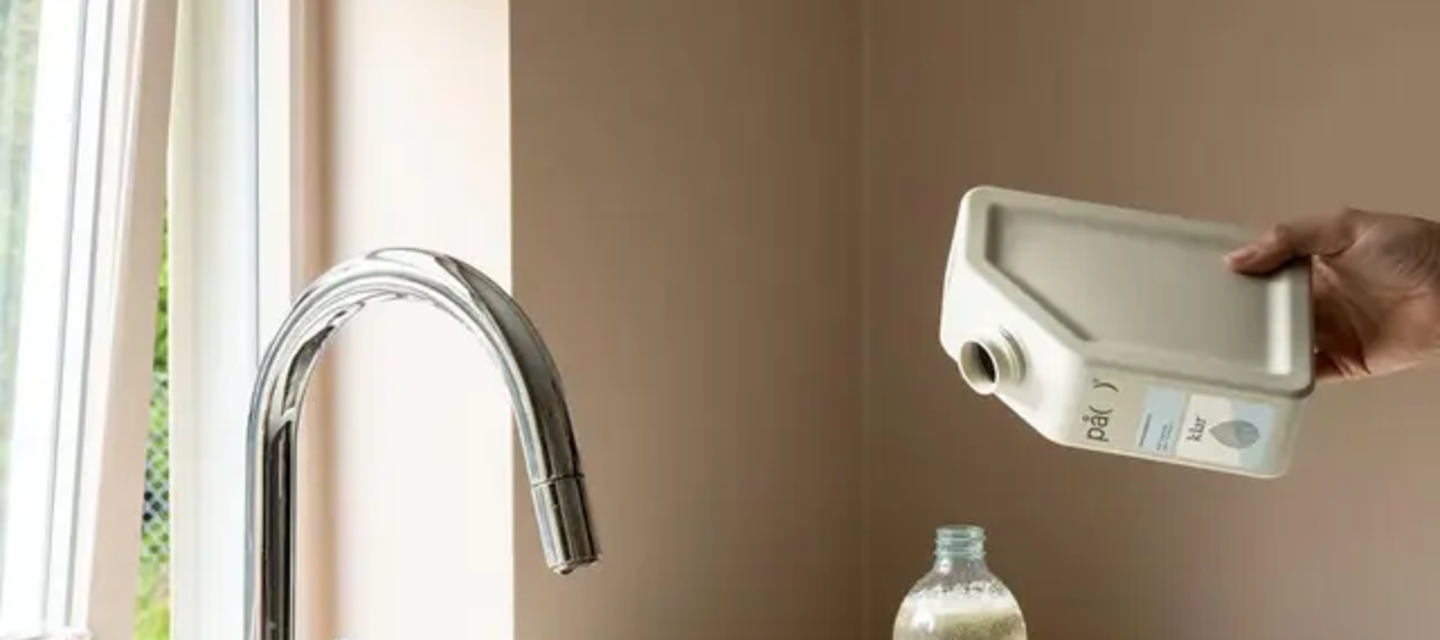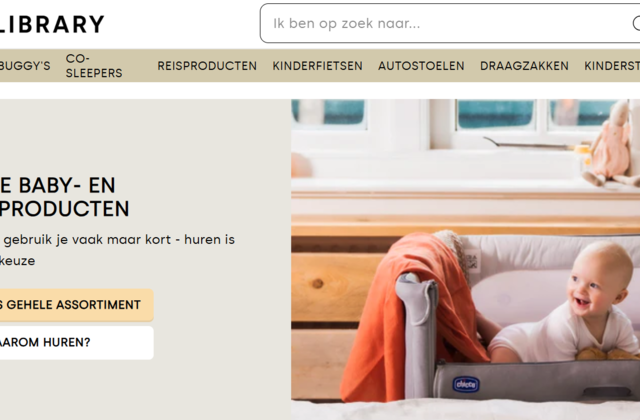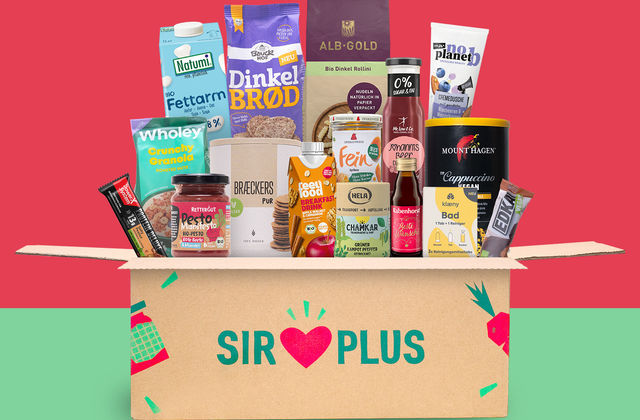What is it? På(fyll) was a circular subscription/refill service launched by Orkla Home & Personal Care, in collaboration with design-studio Bakken & Bæck and innovation consultant Æra, aimed at enabling consumers to reuse packaging for soaps, detergents, and cleaning products. The concept: deliver household products in durable containers, have customers refill from these containers into their own dispensers, and pick up empties for cleaning, refilling, and re-deployment (a “modern milkman” model). The service launched as a pilot and soft rollout in 2022–2023, then formally launched, but on June 26, 2025, På(fyll) announced it would shut down the webshop and terminate the service in its current form.
Why is this important? Plastic packaging is a major contributor to waste and pollution globally; only a small share of plastic waste is recycled effectively. The shift from single-use packaging to reuse and refill models is considered a key lever in advancing circular economy goals. På(fyll) was one of the few attempts by a large FMCG player to operationalize such a model at household scale in Norway, integrating brand portfolios into a reusable container system. Its trajectory — from pilot to closure — provides valuable lessons on barriers, scaling, consumer behaviour, and business model resilience.
Main resource strategy
Slowing the loop / Reuse — the core was to reduce single-use plastic packaging by having containers that circulate through many use cycles.
Other resource strategies
- Closing the loop: containers eventually re-entered recycling when they could no longer be reused (though the design aimed for long life).
- Narrowing: by redesigning containers to be stackable, efficient in transport, and using less material while still durable.
- (Potential) Regeneration: indirect via reduced material extraction and lower plastic production demand.
Business model aspects
Value Proposition:
- For consumers: convenience and sustainability — familiar household products delivered refillably, avoiding single-use packaging.
- For Orkla / brands: an opportunity to reduce packaging waste, differentiate through circular offerings, and capture value in the reuse cycle.
- For society / environment: reduced plastic waste, lower life-cycle emissions from packaging, and insights into circular consumption systems.
Value Creation & Delivery:
- Design and production of durable, refillable containers (in collaboration with Form Us With Love) (Disegno Journal+2ÆRA+2)
- Logistics: delivery of filled containers, pickup of empties (often using existing delivery infrastructure such as Heltjem in Norway) (Disegno Journal+2designwanted.com+2)
- Cleaning / reconditioning / refilling of containers in centralized facilities (third-party partners) (Disegno Journal+2designwanted.com+2)
- A QR code / digital ordering mechanism, not a subscription model (users order when needed) (Disegno Journal+2designwanted.com+2)
Value Capture:
- Revenue from sales of products via the service (soaps, detergents, etc.)
- Potential margin uplift from reuse and reduction of packaging costs
- Brand value / reputational capital for Orkla
- Data & customer insights from usage patterns
Strategies for degrowth / sufficiency: The model encouraged sufficiency in packaging. By reusing containers multiple times, it reduced the need for continuous production of new packaging materials. It also discouraged overpackaging by emphasizing the durability of containers rather than decorative or marketing-led packaging.
Business model experimentation practices
- Initial pilot testing with limited households to validate logistics, container design, user behaviour (2022) (ÆRA+2designwanted.com+2)
- Iterative container design (collaboration with Form Us With Love), optimizing shape, stacking, ease-of-use, pour dynamics, label removal, and handling in refill systems (ÆRA+3Disegno Journal+3designwanted.com+3)
- Use of existing delivery networks rather than building new logistics from scratch (to reduce friction) (Disegno Journal+1)
- Scaling from B2C pilot to broader market rollout plans (and consideration of B2B) (ArcticToday+2designwanted.com+2)
- A continuous learning loop: measuring container life cycles (e.g. target of 10 use cycles) and environmental impact (LCA)( Fast Company+3Disegno Journal+3ÆRA+3)
Tools, methods and approaches used:
- Life Cycle Assessment (LCA) modeling (NORSUS was cited as doing LCA showing 65–80% lower environmental impact for refilled containers) (ÆRA+2designwanted.com+2)
- Design thinking & co-creation (Form Us With Love, Bakken & Bæck) (ÆRA+2designwanted.com+2)
- Behavioural / user insight studies to understand constraints of households (e.g. container size, usability) (no+2designwanted.com+2)
- Lean / iterative prototyping of containers and service flows
- Partnering with logistics providers for delivery / pickup
- Tracking of QR codes and re-order behaviour
Sustainability outcomes
- Projected 65–80% lower environmental impact per container cycle compared to single-use packaging, per LCA assessments cited by the project team (ÆRA+2pafyll.com+2)
- Aim for container reusability over 10 cycles (or more) to amortize environmental benefits (Disegno Journal+2designwanted.com+2)
- Raised awareness and consumer engagement around reuse, plastic waste, and the complexities of service infrastructure
- Lessons learned (user behavior, logistics complexity, cost of scaling) that can help future circular models succeed
Challenges & Reflections
- Behavioural change is slow: The team cited that they did not succeed in shifting enough customers’ habits quickly enough (no+1)
- Value chain complexity: Building and scaling the full chain (delivery, pickup, cleaning, reconditioning, refilling) is operationally intensive and costly.
- Economics & margins: Reuse systems can have challenges in capturing sufficient margin over the long term to cover logistics, processing, and overheads.
- Infrastructure dependence: Dependence on third-party logistics and partners can introduce fragility.
- Scale & consumer reach: Achieving scale is critical for per-unit cost reduction; if customer density or frequency is low, unit economics may not hold.
- Timing / funding constraints: The venture didn’t get to the point where it could overcome these scaling barriers before strategic / financial constraints forced closure.
- Lessons & salvage: The model offers rich learning about what is needed (incentives, customer subsidies, more aggressive adoption, regulatory support) and what to watch out for (container durability, logistic cost, customer convenience).
Sources
Shifter. (2025, June 27). Slutt for Orkla-satsning som skulle gjøre ombruk av emballasje enkelt. Accessed from https://www.shifter.no/nyheter/slutt-for-orkla-satsning-som-skulle-gjore-ombruk-av-emballasje-enkelt/407282 shifter.no
På(fyll). (2025). På(fyll) service and closure notice. Accessed from https://pafyll.com/ pafyll.com+1
ÆRA. Creating På(fyll). Accessed from https://www.era.as/projects/orkla-hpc-pafyll ÆRA
FastCompany. (2023). Could this one reusable container be used for… everything? Accessed from https://www.fastcompany.com/90947105/could-this-one-reusable-container-be-used-foreverything Fast Company
The Hub (startup profile). På(fyll). Accessed from https://thehub.io/startups/pafyll The Hub
DesignWanted. På(fyll): a circular service to offer refillable containers. Accessed from https://designwanted.com/pafyll-circular-service-refillable-containers/ designwanted.com
Form Us With Love / Disegno (on container design & behavior). The Modern Milkman article. Accessed from https://www.disegnojournal.com/newsfeed/modern-milkman-pafyll-fuwl-design-reviewed-3-wajp7 Disegno Journal



